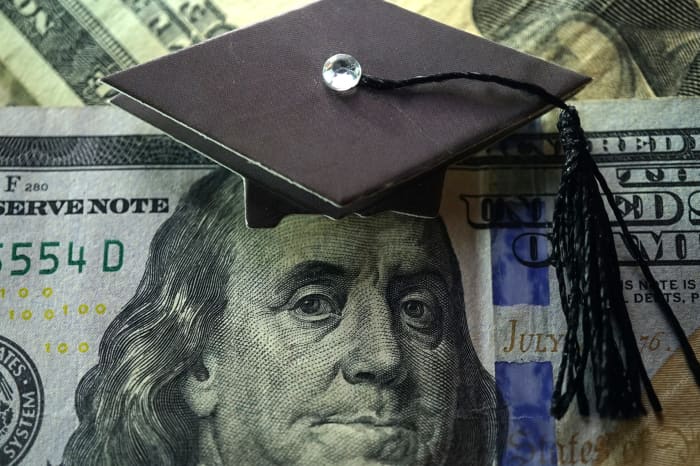‘I’m so confused.’ I’m a school nurse who took out about $30K in student loans — but over the years they have ballooned up to $96K. How could this even happen and what can I do about it?

How to get out of student loan debt
Getty Images/iStockphoto
Question: I’d like to obtain advice on tackling student loan debt. I do not have private loans, and I owe approximately $96,000. I’m so confused because initially my loans were less than $30,000, but I think the rest of it comes from interest. I’m not sure what I am looking at with my loans. My loans have been in forbearance, and I want to investigate loan forgiveness options. I am a school nurse and support my family, so my income is limited. Can you provide direction? It would be greatly appreciated.
Answer: First let’s look at how a student loan balance can triple, and next we will look at your loan forgiveness options (good news: being a nurse will likely help you). Note that your loans are federal so you most likely do not want to refinance as it will strip you of forgiveness options. (Readers with private loans that have high interest rates, however, may want to look into refinancing, as rates are pretty low right now.)
How can a student loan balance end up so high?
Mark Kantrowitz, student loan expert and author of Who Graduates from College? Who Doesn’t?, says, for the student loan balance to triple requires an extended period of non-payment that usually requires at least two decades. “This is not just the interest and fees that accrued during the in-school and grace periods, but also long-term deferments, forbearances and delinquencies, as well as collection charges from defaults,” says Kantrowitz.
Have a question about getting out student loan or other debt? Email chill@marketwatch.com.
It’s also possible mistakes were made by the lender. If you suspect a discrepancy in your debt, errors do happen, though rarely, and Kantrowitz recommends getting a copy of your complete payment history to see why your loan balance has grown so much.
Options for student loan forgiveness
The good news is that there are a number of student loan forgiveness programs especially for nurses, particularly if you work in an underserved or low-income community, says Michael Kitchen, student debt expert at Student Loan Hero. These programs include the Nurse Corps Loan Repayment Program (NCLRP), National Health Service Corps (NHSC) Loan Repayment Program and a variety of state-specific programs. (See some options here.)
“Options for loan forgiveness depend on the type of loan. Federal loans may be eligible for Public Service Loan Forgiveness (PSLF) if you work for a public school or private school that is a 501(c)(3) organization,” says Kantrowitz. “Often, these [nursing] programs require the borrower to work in a specific area such as for a low-income school district but there are also loan forgiveness programs for nurses who enlist in the U.S. Armed Forces.”
There is also a limited PSLF waiver in effect through October 31, 2022 allowing payments made on loans in the Federal Family Education Loan Program (FFEL) to count toward PSLF if you’re working full time in a qualifying job at the time the payments were made, and you consolidate them into a Federal Consolidation Loan. “You will also need to file a PSLF form, either an employment certification form or an application for forgiveness, using the PSLF Help Tool whether or not your loans are already in the Direct Loan program,” says Kantrowitz.
Options for student loan repayment
Regardless of whether you qualify for forgiveness, you should switch your loans to an income-driven repayment plan, which will base loan payments on your income, not the amount you owe. “That should yield a more affordable monthly loan payment,” says Kantrowitz. Even though your payments are likely on pause now, you should start talking about getting on this program for when student loan payments resume.
On an income-driven repayment plan, your required monthly payments could be as low as $0, and those $0 payments in this scenario, count towards forgiveness, says Leslie H. Tayne, a financial attorney. (On an income-driven repayment plan, after roughly 20-25 years, the remainder of your loans may get forgiven.) “Applying for an income-driven repayment plan is free and can be done online directly by you. Once you’re on a plan, you’ll need to re-certify your income and family size every year, which could alter your monthly payment,” says Tayne.
Because a forbearance causes the loan balance to grow as interest continues to accrue and is added to the loan balance at the end of the forbearance period, ending the forbearance can be helpful if you’re able to make payments on the loan. “To end the forbearance, the borrower should contact the loan servicer and ask,” says Kantrowitz.




